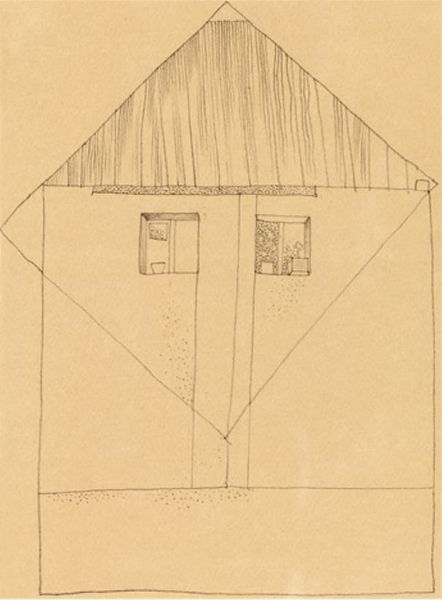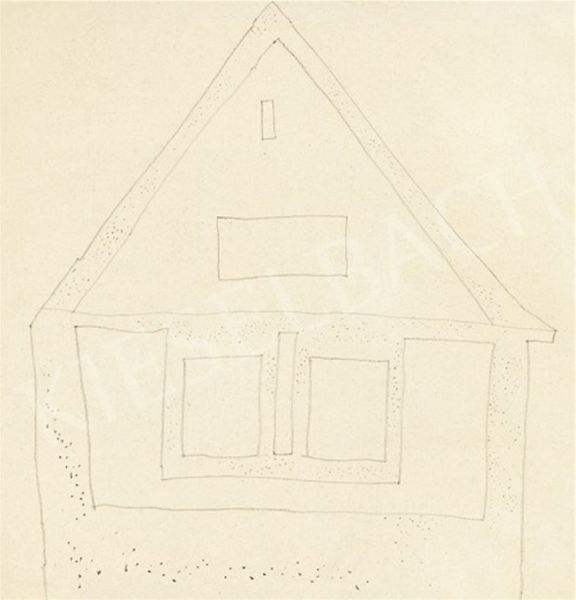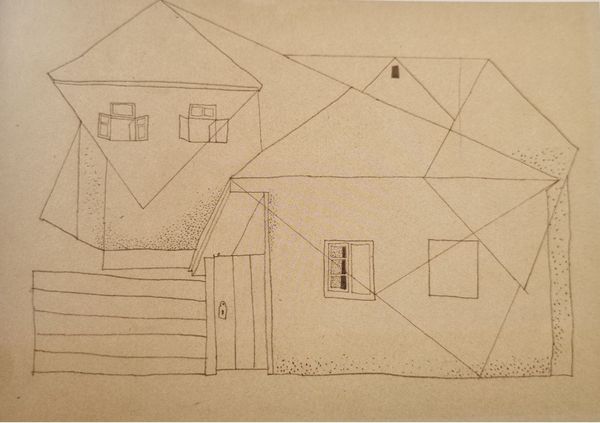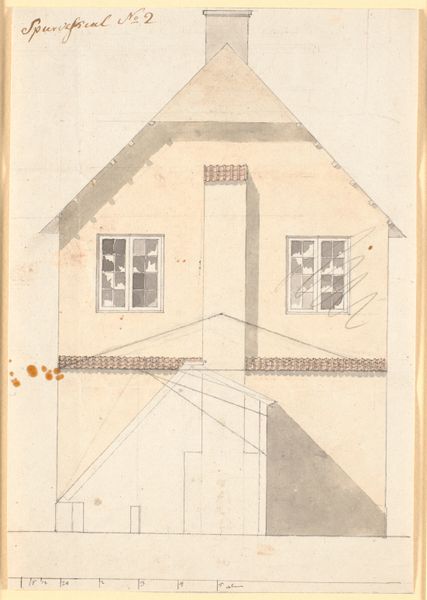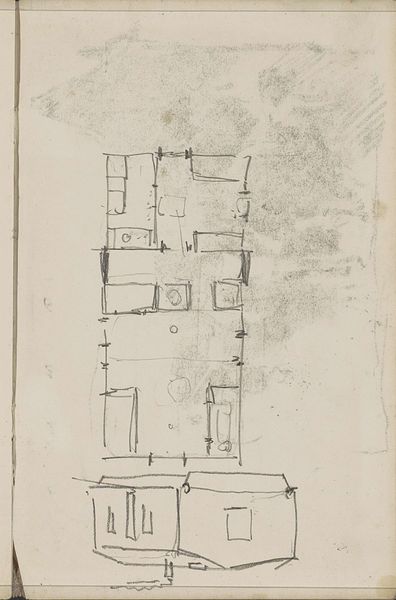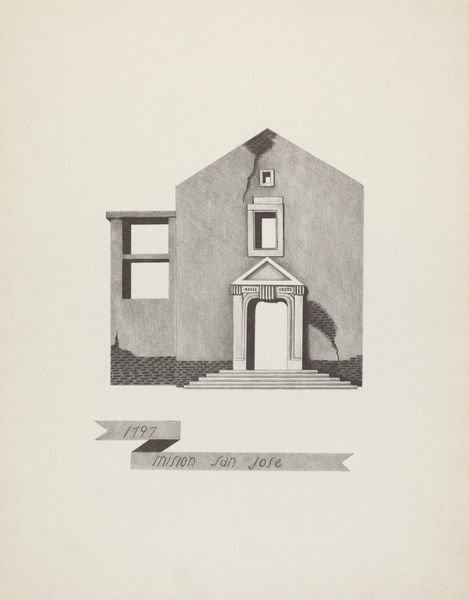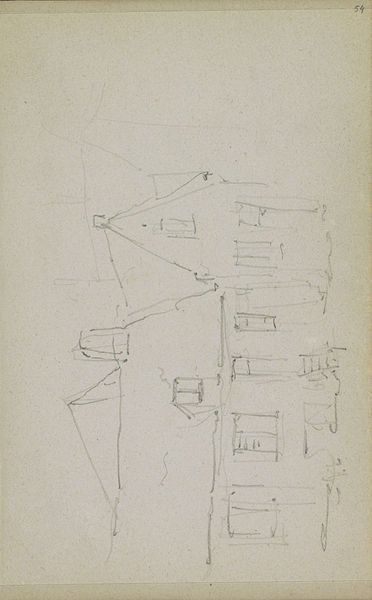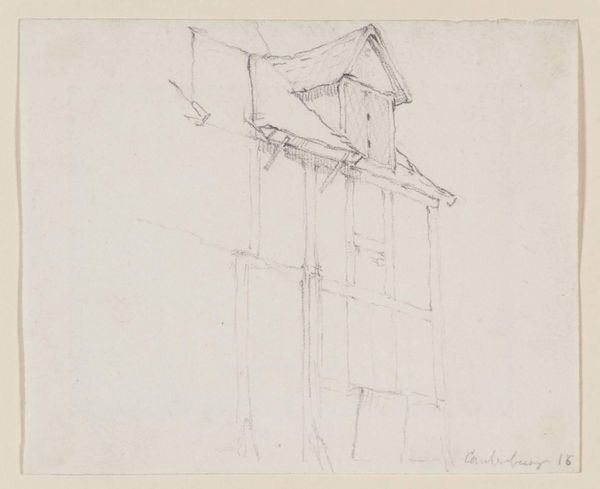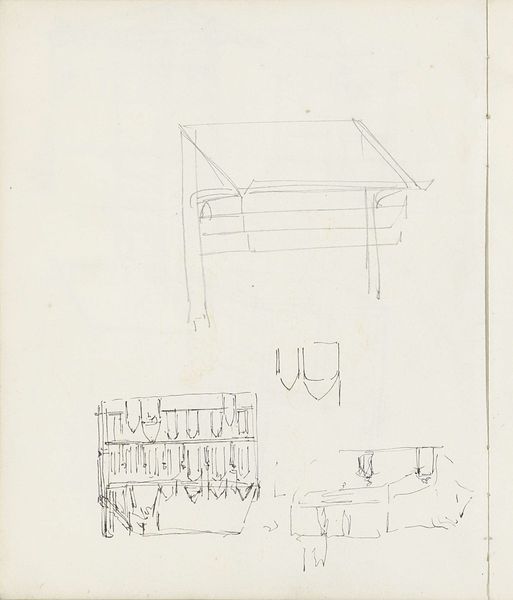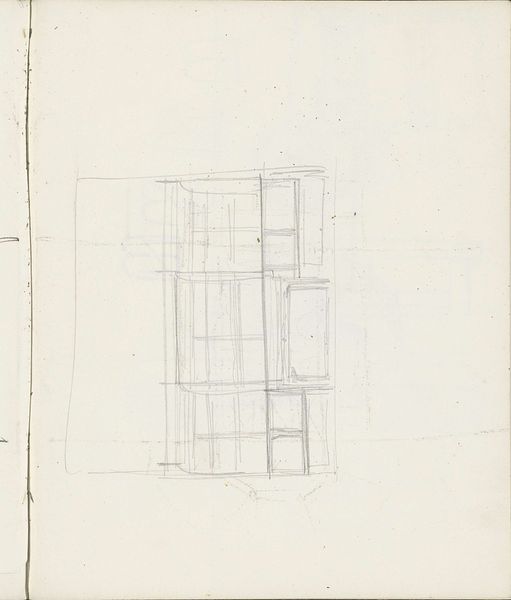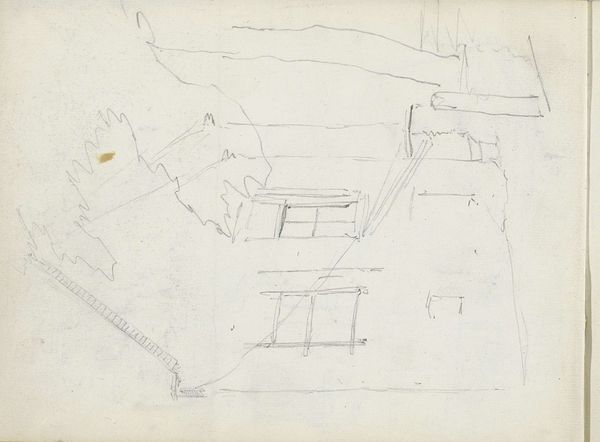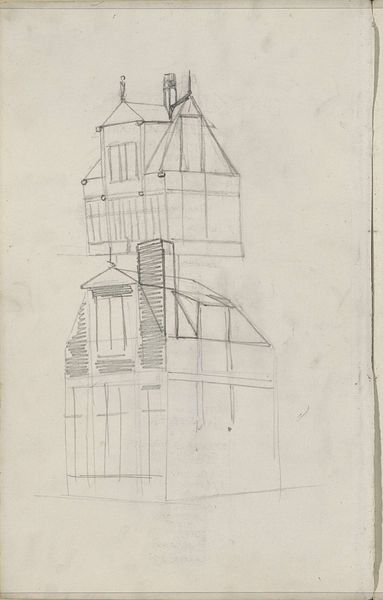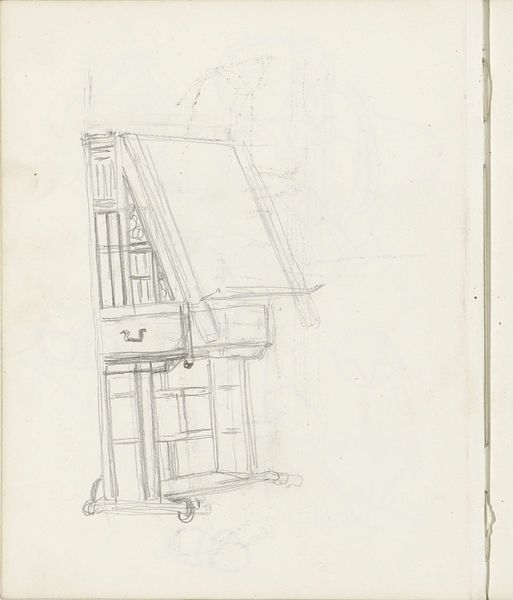
drawing, paper, pencil, architecture
#
architectural sketch
#
drawing
#
architectural plan
#
paper
#
geometric
#
pencil
#
abstraction
#
architectural drawing
#
line
#
architecture drawing
#
modernism
#
architecture
Copyright: Public domain
Curator: This drawing, simply titled "House on a Pol" comes to us from Vajda Lajos, created in 1936 using pencil on paper. The architectural precision, especially the superimposition of geometric forms, strikes me immediately. It feels both familiar and utterly alien. What’s your initial read? Editor: My first thought? Eerily precise. It's like staring at the ghost of a building. The skeletal lines, the near symmetry – it suggests a space that's perhaps been emptied of life, or maybe never held it in the first place. Curator: That's a fascinating take. I think Vajda's genius lies in that very tension. He merges reality, a very recognisable house, with these abstract geometrical frameworks. The triangles and intersecting lines are like symbols that cut through the surface and open a secret level to its meaning. I’m reminded of the merging of folk motifs with constructivist principles so prevalent in Hungarian art from that era. Editor: And those small triangles in the windows – almost hieroglyphic, aren't they? The artist is creating a personal, nearly hermetic system of signs. The shadow inside the window, and a blank in the second window, seems intentional too, contrasting clarity and obscurity. I wonder what these spaces hide, or maybe if the meaning of house, home or "Pol", an area, here transcends the purely physical... maybe represents collective memory or longing. Curator: Absolutely, these motifs pull at threads connecting collective unconscious to visual languages of the modernism. The 'House on a Pol’ is less a portrait of bricks and mortar, and more a window onto the architecture of memory itself. Editor: Yes, it feels less like documentation and more like an act of… divination. Like he is peering into the very idea of “home”. It is an echo with multiple, reverberating, symbolic possibilities. Curator: Ultimately, the work becomes a complex meditation of memory, form and personal mythology rendered in incredibly economic lines, doesn’t it? Editor: Indeed, a quiet yet forceful act of translating inner landscapes through deceptively simple marks.
Comments
No comments
Be the first to comment and join the conversation on the ultimate creative platform.
